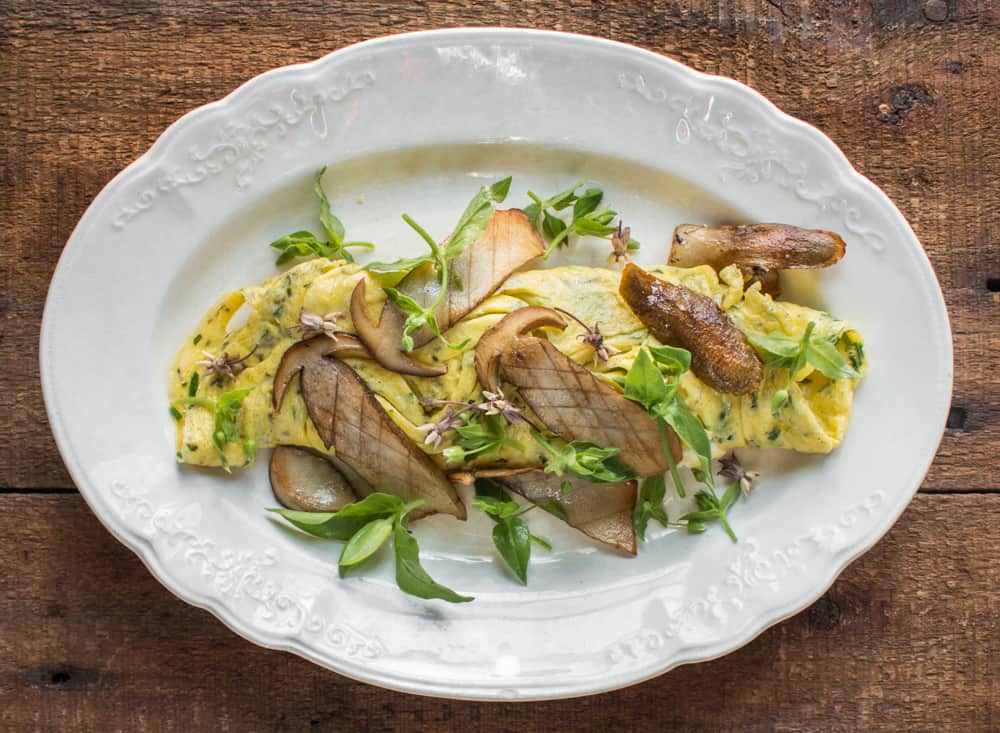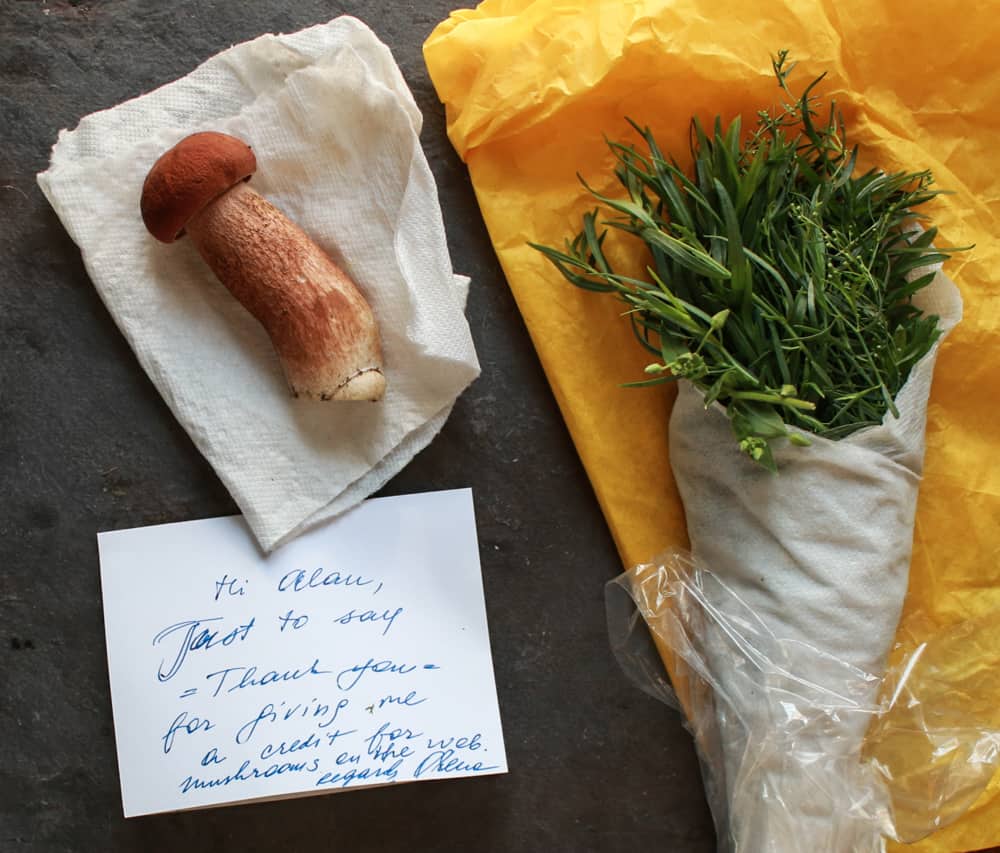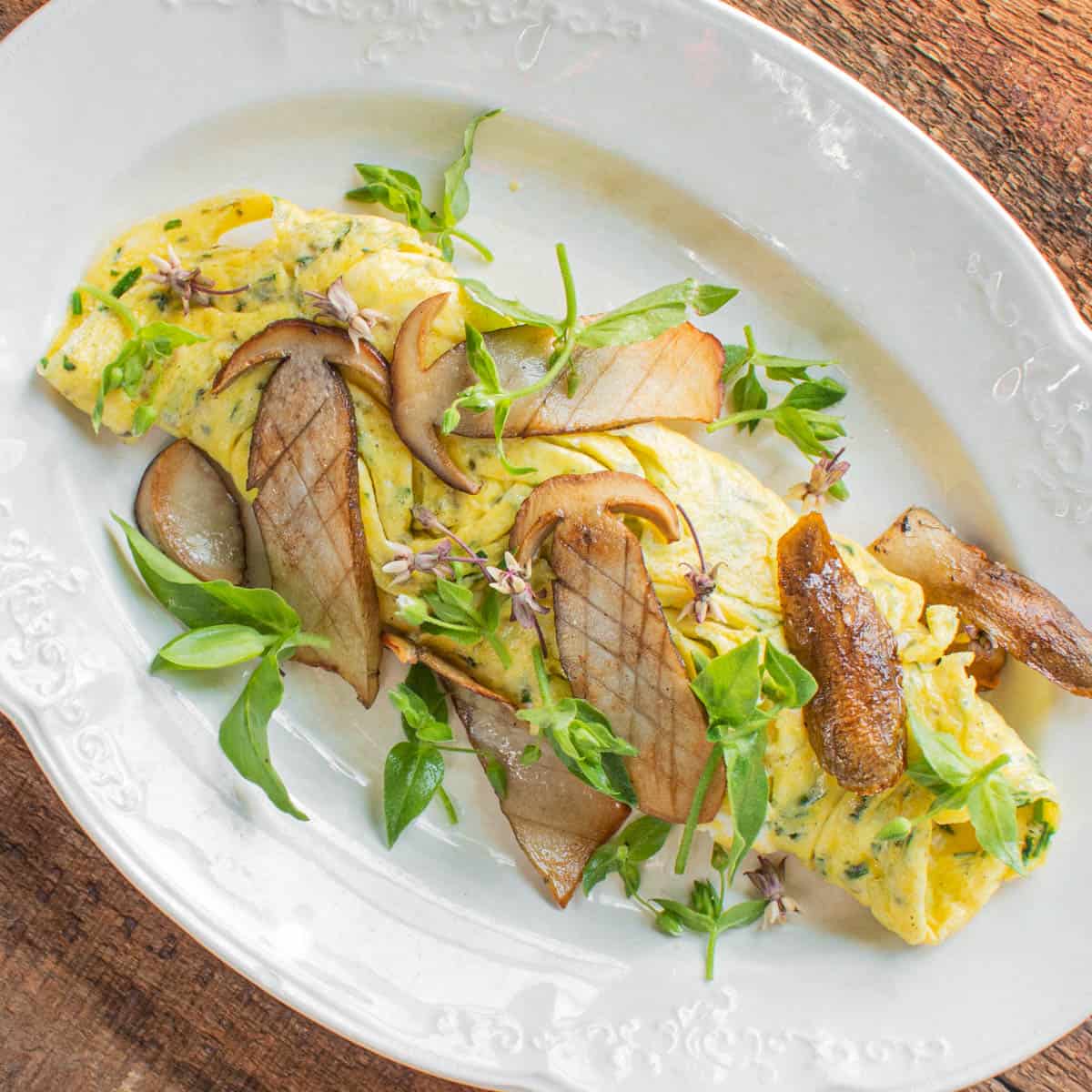A rich duck egg omelet makes for a great change of pace if you haven't had one. Duck eggs are bigger than chicken eggs, and the yolk is often two to three times larger, which means a richer omelet.

There's lots of different variations out there, but one of my favorites is a simple omelet with a fresh cheese filling and herbs like basil or tarragon. I add some sauteed mushrooms and fresh baby greens on top to make it really attractive, but you can add some to the filling if you like too.

There's a lot to be said about a perfectly made omelet. Here's a few pointers:
Techniques for a perfect omelet
- The omelet should absolutely not have the slightest hint of brown, it should be perfectly blonde.
- Using the residual heat of the pan, and covering the omelet for a time before serving will help gently cook it through and steam as opposed to brown.
- I like to salt the beaten egg beforehand and allow it to rest to prevent weeping. You'll see a gentle color change to let you know the transformation has occured.
Duck Egg Omelette with Ricotta
A simple duck egg omelet with herbs and mushrooms with ricotta filling.
Servings: 1 Servings
Calories: 538kcal
Equipment
- 8 inch nonstick pan
Ingredients
- 2 large duck eggs
- 1 tablespoon sliced fresh basil
- 1 tablespoon heavy cream
- 2 tablespoons highest quality fresh ricotta cheese I like calabro brand
- 1 tablespoon grated parmesan
- 1 ounce fresh bolete mushrooms or another mushroom of your choice
- 2 tablespoons unsalted butter or lard
- Edible flowers I had some milkweed to garnish, optional
- Kosher salt and fresh ground black pepper
- Small handful of fresh microgreens I used tender chickweed tips
Instructions
- Beat the eggs with the cream or milk well, then whisk in the herbs and a pinch of salt. Allow the eggs to rest for 15 minutes if you have the time, since the salt will denature the eggs and help prevent you from having weeping, soft omelette.
- Mix the parmesan and ricotta In an 8 inch non-stick pan or cast iron skillet gently melt the butter on medium-low.
- Add the eggs and stir, pushing the eggs from the outer side of the pan inward with a spatula here and there as the cook the prevent a crust from forming on the outer edges.
- When the omelette is just about done, spread the cheese in an even line of the omelet, then fold each side over to close it up. Roll the omelet over so the seam is thouching the pan, then cover and allow to rest/cook with the residual heat while you sear the mushrooms and finish the dish.
- Meanwhile, slice the mushrooms ¼ inch thick, then brown lightly in the butter and season to taste with salt and pepper. Gently transfer the omelet to a pre-heated plate, then garnish with greens you've dressed with a dash of lemon juice, scatter the mushrooms over the top, season with a few cracks of the pepper mill and serve immediately
Notes
Notice that the eggs are beaten seasoned beforehand here with salt. With eggs, it not only helps to season them, but it will help them cook uniformly as well, and helps prevent weeping of liquid post-cooking. Adding the herbs and allowing them to sit in the beaten egg also helps to pronounce their flavor.
Nutrition
Serving: 1omelet | Calories: 538kcal | Carbohydrates: 4g | Protein: 21g | Fat: 49g | Saturated Fat: 24g | Polyunsaturated Fat: 3g | Monounsaturated Fat: 17g | Trans Fat: 1g | Cholesterol: 1319mg | Sodium: 477mg | Potassium: 431mg | Fiber: 0.3g | Sugar: 2g | Vitamin A: 1907IU | Vitamin C: 1mg | Calcium: 151mg | Iron: 6mg



Leave a Reply